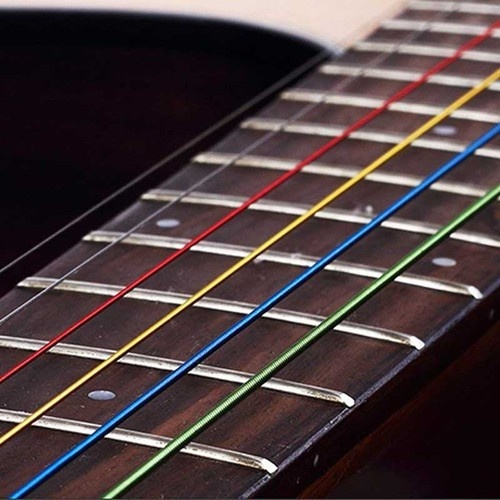

What to consider when choosing string gauge?Ĭhoosing the right gauge for you can be a lot of fun. It is going to vary slightly from manufacturer to manufacturer, but here is the typical gauge range for acoustic guitar strings: Heavy-gauge guitar strings are suitable for:Įvery acoustic guitar manufacturer is going to designate their string gauges in their own way. This means that you would need to make sure that your guitar’s neck is strong enough to support heavy-gauge before buying them. On the other hand, heavy gauges exert more tension on the guitar neck. Instead, they are chosen by more experienced musicians who need more volume and sustain and who have the strength to play on such strings. Usually, heavy-gauge strings aren’t used by newbies. Heavy strings are more rigid than light strings, which generally makes them harder to play. Heavy-gauges pretty much mirror the features of light gauge strings. Overall, light-gauge strings are suitable for: 059, and the sound varies widely across the gauges. Gauges are denoted in thousandths of an inch, e.g. The string gauge is basically its thickness. We have a detailed article on Acoustic Vs Classical Guitar to addressed the age-old dilemma of every beginner, you can check that out too. This means, in the end, that acoustic and classical guitar strings are not interchangeable. Acoustic guitars generally use steel strings, while classical/flamenco guitars use nylon strings.Ĭlassical guitars just aren’t built tough enough to withstand the tension of steel strings. The construction difference between acoustic and classical/flamenco guitar is the reason why they are fitted with different kinds of strings. The very first thing you need to understand is that acoustic and classical/flamenco guitars use completely different kinds of strings, even though these instruments are similar in appearance. For an untrained eye and ear, all guitar strings may be very similar to each other. In the end, you should be able to pick the right set of strings for your instrument easily.įirst of all, keep in mind that you can’t just take and slap any string set onto your guitar. In this little guide, we are going to examine in-depth what makes guitar strings. What’s the difference between coated and uncoated strings?.What to consider when choosing string gauge?.These are the strings favored by tens of thousands of happy players. This list is based on customer popularity and customer reviews.That’s a different list for another time. Classical guitars (also used in flamenco and folk, commonly) use nylon strings. Those are the most common, and the kind used across rock, bluegrass, modern, pop, etc. This list is focused on “steel string” acoustic guitars.They are perfect for everything from bluegrass to rock, from strumming to fingerpicking. All of these recommended strings are great-sounding, general purpose strings. So we’re going to provide you here with the top five acoustic guitar strings that players actually use. You can also go a little crazy trying to analyze the perfect string gauge, produced by the perfect manufacturer, made from the perfect materials… but most of us don’t have the time or money to do that, much less buy and test all the combinations. I’ve done that, and even written a bit about it. Now, you can go down the rabbit hole of obscure acoustic guitar string choices. So choosing the best acoustic guitar strings is important. There’s not a lot of digital effects to hide behind. The acoustic guitar is a very transparent instrument – what you play is what you hear.


 0 kommentar(er)
0 kommentar(er)
